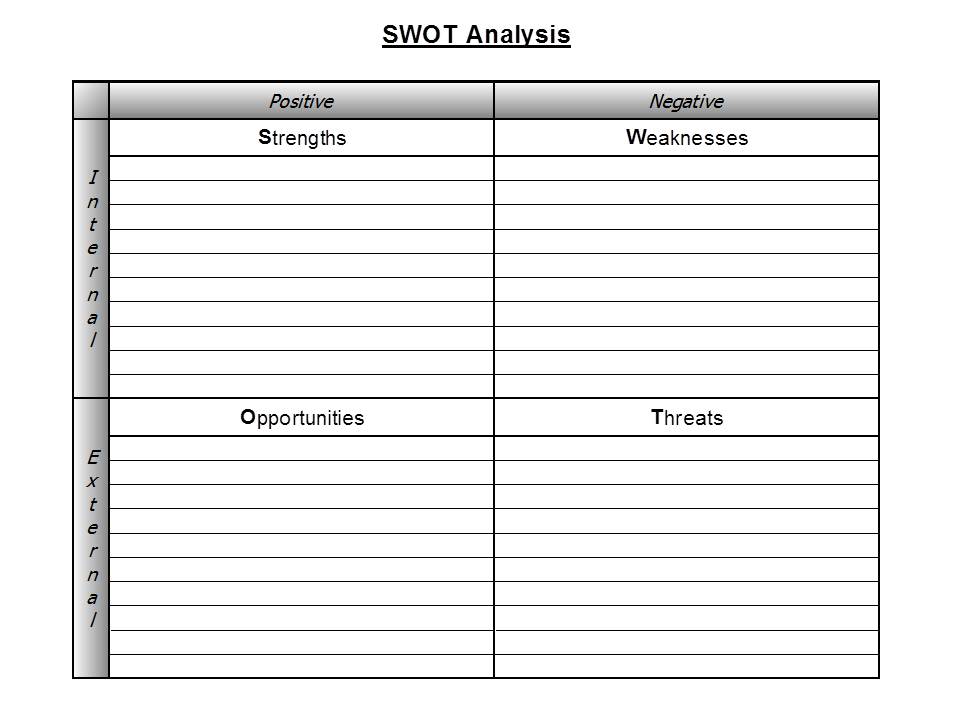
SWOT Analysis
Analysis of strengths, weaknesses, opportunities, and threats.
SWOT Analysis is a common tool used to evaluate: Strengths, Weaknesses, Opportunities, and Threats. These words form the acronym SWOT.
To perform a SWOT Analysis:
Step 1: Create a 2 by 2 table (see the SWOT Analysis diagram below). Label the upper left-hand box Strengths, upper right Weaknesses, lower left Opportunities, and lower right Threats.

Word version of SWOT Analysis.docx (Click link to download Word version).
Excel version of SWOT Analysis.xlsx (Click link to download Excel version).
PDF version of SWOT Analysis.pdf (Click link to download PDF version).
Notice that the upper row items (Strengths and Weaknesses) are 'Internal' and the lower row items (Opportunities and Threats) are 'External'.
Helpful Hint:
The internal and external factors identified here can be used in the Outside-In Thinking tool.
The left-hand items (Strengths and Opportunities) are 'Positive' or helpful to achieving an objective and the right-hand items (Weaknesses and Threats) are 'Negative' or harmful to achieving an objective.
Helpful Hint:
The positive and negative factors can be used in the Help or Hinder tool.
Step 2: Assess your Strengths, Weaknesses, Opportunities, and Threats by answering the following questions.
Strengths:
- What are your strengths?
- What advantages do you have?
- What do you do better than anyone else?
- How can you better use each strength?
Weaknesses:
- What are your weaknesses?
- What is done badly?
- What do others do better than you?
- What do others see as your weaknesses?
- How can you circumvent your weaknesses?
- How can you improve each weakness?
Opportunities:
- What opportunities are available to you?
- What is your biggest opportunity?
- What are the interesting trends?
- How can you exploit each opportunity?
Threats:
- What are the threats?
- What obstacles do you face?
- What are the risk factors?
- What is the worst possible thing that could occur?
- How can you manage the threats?
- How can you mitigate each threat?
Step 3: Matching - Match Strengths and Opportunities to find competitive advantages. Match Weaknesses and Threats to find high impact vulnerabilities.
Step 4: Converting - Convert Weaknesses into Strengths. Convert Threats into Opportunities.

Sources:
MindTools web site at www.mindtools.com
Structured Analytic Techniques for Intelligence Analysis, Richards Heuer, Jr. and Randolph H. Pherson, Washington DC: CQ Press, 2011.
